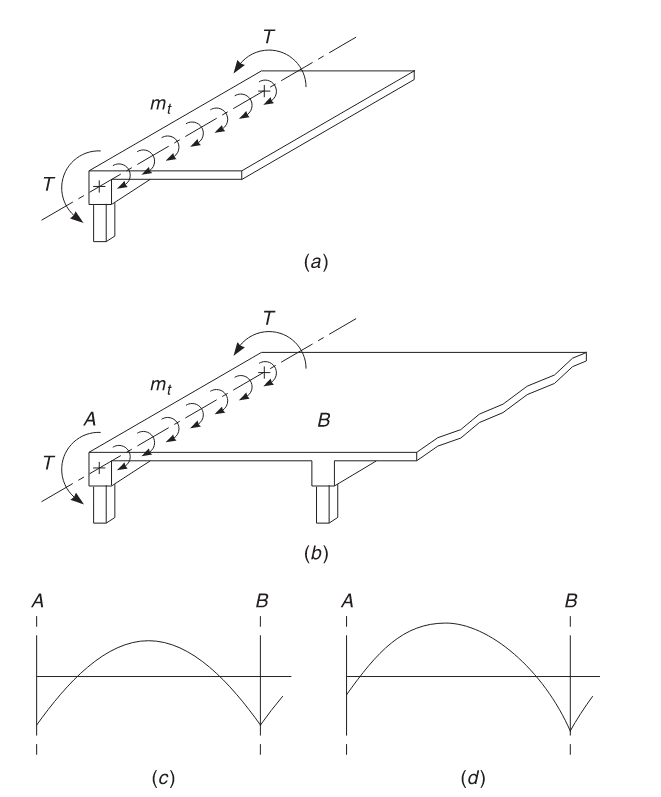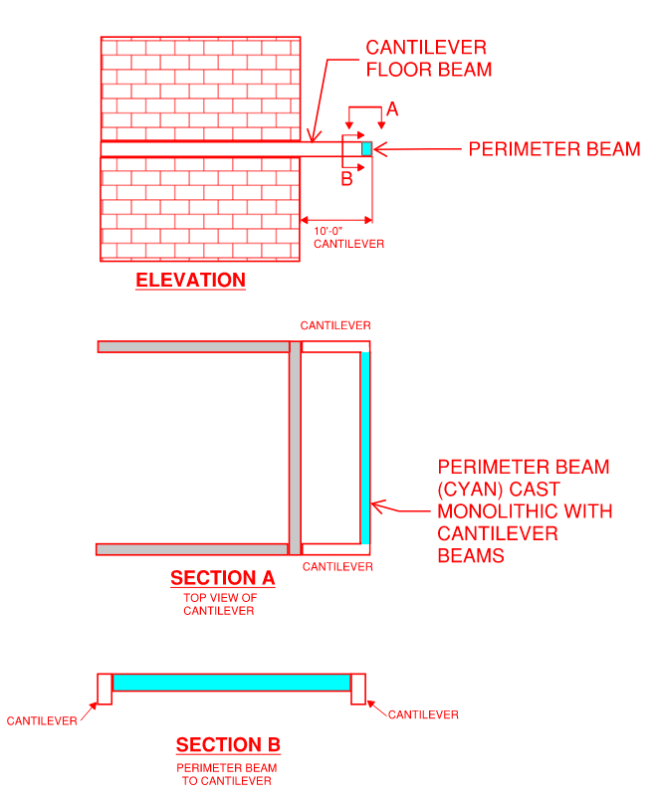StrEng007
Structural
- Aug 22, 2014
- 543
Although not addressed in ACI 318-14, ACI document 314-14 Guide to Simplified Design for Reinforced Concrete Buildings, Section 8.5.5.1, addresses the need for hanger ties used to reinforce a joist to girder beam connection (see equation 8.5.5.1). Is this equation derived from the beam chapter or reinforcing chapter of 318-14? The topic is discussed in ACI 318-19 Section R9.7.6.2.1. However, 318-19 does not provide any equations.
I have a perimeter beam that is cast monolithically with concrete girders that cantilever off the vertical system of the building. I would like to consider the perimeter beam as simply supported between the cantilevers, especially at the end bay. I don't want additional torsion on the end of the cantilever. I understand there will be torsion due to shear. The goal is to prevent torsion due to moment transfer.
Are there any special detailing requirements that would allow me to make this simple span assumption?
There will be shear reinforcing vertical ties at the end of the supported beam, and (2) longitudinal top bars will be provided for ease of construction. These (2) top bars will develop some fixity at the girder. How do I eliminate moment fixity at this location? Does the shear reinforcing equation from 314-14 account for this? Or would additional torsion ties need to be added to the amount of shear reinforcing from equation 8.5.5.1 in ACI 314-14?
I have a perimeter beam that is cast monolithically with concrete girders that cantilever off the vertical system of the building. I would like to consider the perimeter beam as simply supported between the cantilevers, especially at the end bay. I don't want additional torsion on the end of the cantilever. I understand there will be torsion due to shear. The goal is to prevent torsion due to moment transfer.
Are there any special detailing requirements that would allow me to make this simple span assumption?
There will be shear reinforcing vertical ties at the end of the supported beam, and (2) longitudinal top bars will be provided for ease of construction. These (2) top bars will develop some fixity at the girder. How do I eliminate moment fixity at this location? Does the shear reinforcing equation from 314-14 account for this? Or would additional torsion ties need to be added to the amount of shear reinforcing from equation 8.5.5.1 in ACI 314-14?


